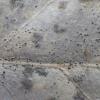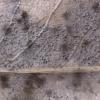
07-10-2014 20:12
Hi to all Could someone help me with this article

08-10-2014 01:57
 Pablo Sandoval
Pablo Sandoval
Estimados,Alguien me podría ayudar con el siguien

07-10-2014 11:20
 Jean-Paul Priou
Jean-Paul Priou
Hi all, Someone can find me the following paper ?

02-10-2014 20:00
Peter ThompsonHello Everyone,I collected a sample of a stromatic

06-10-2014 20:36
 Chris Yeates
Chris Yeates
Bonsoir tousI recently collected a partially-decor

02-10-2014 10:20
Marja PennanenHi all,I found these accidently an a leaf with som

04-10-2014 21:35
This Cheilymenia found on horse dung seems a good

31-08-2013 13:22
Nina FilippovaGood time to everyone. Ascocoryne turficola appea
Hi everyone,
Maybe someone can help me to identify this pyreno growing on leaves. Below I attach photos of the specimens as well as some data and a file with information about the microscopy.
As I refer in the data I did not observe any ascus; Not because I did not look for them, but because I was not able to see one in the several slides prepared. The result was always the same: either the perithecia were empty (dead) or had a amount of spores near the ostiole and, pressing the slide, a big amount of spore were ejected but no asci was visible. I have tried to key it using the two keys in the references, prepared for lichens, which maybe is not the case, since no alga was found: In [1] the only genus with simple spores considered is Monoblastia, which has bigger spores ornamented with spines; From [2] I end up with Verrucaria, whose key is prepared for crustose species on rocks and no species is mentioned living on bark or leaves.
So, any help on the classification/identification of this pyreno will be welcome. A genaral key for pyrenomycetes will also be appreciated.
Thanks in advance,
zaca
Data:
Date: 2015-07-18
Location: Mata do Bussaco, Portugal
Ascomata: Pyrenocarp without involucrellum, with exciple pigmented throughout, and the periathecia covered by a thin layer of bark cells;
Asci: Not observed;
Ascospores: Simple and guttulate, from one to several drops, with dimensions
(9.1) 9.6 - 11.7 (13.1) x (6.1) 6.2 - 7.6 (8.3) µm
Q = (1.1) 1.3 - 1.8 (2.1) ; N = 35
Me = 10.7 x 6.9 µm ; Qe = 1.6 .
References:
[1] André Aptroot, Robert Lücking, Harrie J.M. Sipman, Loengrin Umaña, José Luis Chaves;
Pyrenocarpous lichens with bitunicate asci – A first assessment of the lichen biodiversity inventory in Costa Rica; Bibliotheca Lichenologica Band 97, 1-162 (2008).
[2] Smith et al. (eds.), The Lichens of Great Britain and Ireland, The British Lichens Society, 2nd ed., 2009.
Don't search for any ascus, there is none: it's a coelomycete, an anamorph, probably a Phoma or close to to it from the shape of conidia's.
I guess it grows on Quercus leaves, right? Quercus ilex? Quercus suber?
Cheers - LUC.
At the end I suspected that it could be an imperfect fungi, but this is new for me. Can you indicate some website with more inormation about the genus Phoma and relatives. What are the important characters?
About the trees: there were both Quercus ile and Q. robur in the vicinity. A relative large Ilex aquifolium also exist at the place and I suppose that one of the three leaves in my photo (in the file) is from it.
Thanks again and Best regards,
zaca
The important characters are the hosts (some species are plurivorous, others are specific to hosts), the size, shape and guttules of conidia's, and a look at the hymenium (that's poorly differenciated on Phoma, more noticeable on some other genera).
You can begin with Grove: British stem and leaf fungi 1 & 2, available on Cyberliber: http://www.cybertruffle.org.uk/cyberliber/books.htm and papers published in the earlier issues of Persoonia also available on Cyberliber, several articles, check for Phoma-related articles: http://www.cybertruffle.org.uk/cyberliber/61056/index.htm
And there's of course the book: Ellis, M.B. and Ellis, J.P., Microfungi on Land Plants.
With that, it's a good beginning, but researches are going on, Phoma is a difficult genus in the sense there are many, many species which sometimes need to be redescribed.
Cheers - LUC.
Many thanks for your attention. Now I have a lot of references to start to know something about this new (old) and inexhaustible theme.
Best regards,
zaca




 20150718-9407-Pyreno-on-leaves-0001.pdf
20150718-9407-Pyreno-on-leaves-0001.pdf